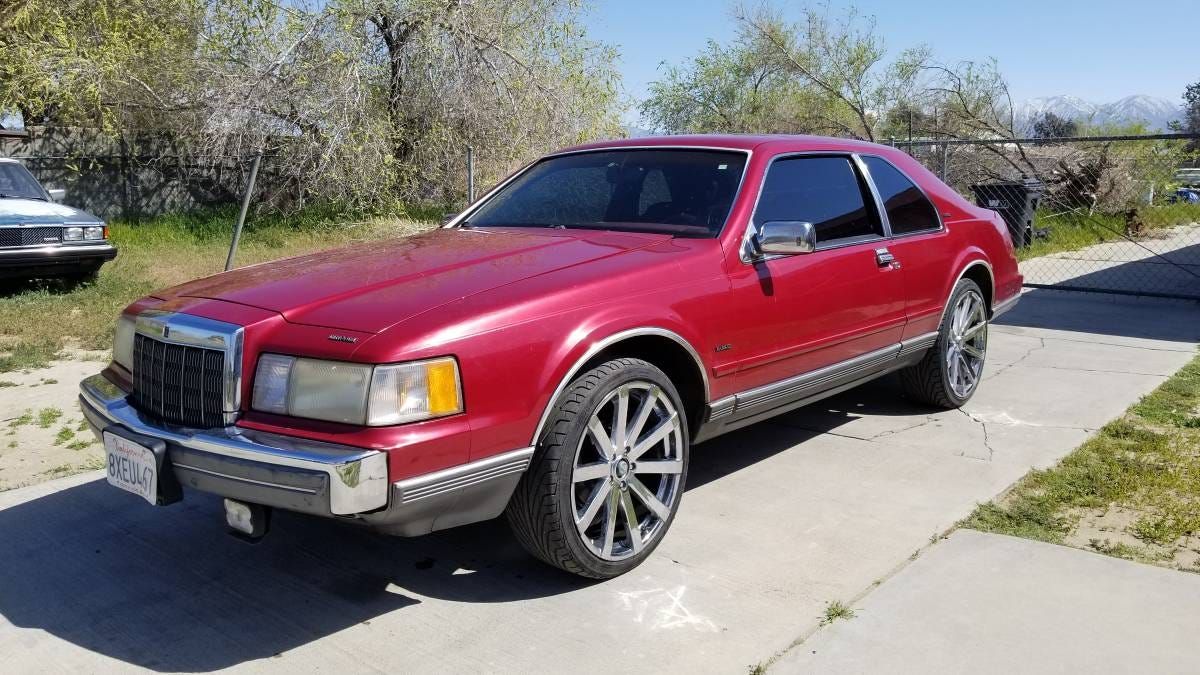At $2,295, Is This 1990 Lincoln MK VII LSC A Good Deal?
Today’s Nice Price or No Dice Lincoln MK VII is an LSC (Luxury Sports Coupe) which means it has the Mustang’s high-output V8 and extra gauges. It’s also a little rough around the edges. Could an appealing price let you look beyond its flaws?
“Don’t mod me, Bro” is a lament we hear time and time again. People who personalize their vehicles may find that, when it comes time to sell, not everyone else shares their same taste. That was the case with last Friday’s 2003 BMW M3 convertible. While it had a cool Topaz over Cinnamon color scheme from the factory, a selection of aftermarket wheels, hood, and lowered suspension gave the car a less-than-universal appeal. Coupled with a $17,995 asking price, that conspired to see the car fall in a 68 percent No Dice loss.
Advertisement
Now, today’s 1990 Lincoln MK VII LSC does suffer from the same wheel-itis as did Friday’s Bimmer, but considering the price differential, I’m thinking we might just be able to cut the big coupe some slack. To help with that a bit, I think we should go back and consider the legacy that the car carries on its impressive shoulders... er, trunk lid.
Up to 50% Off 50% Off Pet Items for Amazon Pet Day - 48 Hours Only Huge Discounts
There are savings on everyday items you already buy, and savings on the things you’ve been waiting for a sale on to spoil your pet with. Buy at Amazon Advertisement
The history of Lincoln’s halo coupes goes back to the late nineteen- thirties when industrial heir and global gadfly Edsel Ford returned from a trip to Europe electrified by the continent’s sexy designs that draped the rides of the elite. E. Ford the senior commissioned a custom design from Ford’s head penman, Bob Gregorie, and directed it be based on the already impressive V12-powered Lincoln Zephyr. Prepared for his 1939 Florida vacation, the smoothed-out and channeled one-off Lincoln wowed not only Edsel but everyone who saw it. Ford thus ordered the hand-built car be offered to the public.
Advertisement
The start of U.S. i nvolvement in WWII put Continental production on hiatus, and in 1943 Edsel Ford succumbed to cancer. The 1946-48 Continentals — like almost all of the immediate post-war cars — were just slightly spiffed-up versions of the nearly decade-old design. Those cars are the last V12-engined cars sold by any major U.S. manufacturer.
FoMoCo resurrected the Continental in 1956, not just as a car but as a separate brand positioned just above Lincoln. The Mark II was, once again, a nominally hand-built car. At $10,000, it was also one of the world’s most expensive. Those dollars bought a car that was jaw-droppingly beautiful as well as modern, carrying only a vestige of its pre-war ancestors by placing its spare tire under an imposing trunk lid rump-bump.
Advertisement
While the MK II was a dramatic statement, it was far from profitable, so much so that Ford moved the successor MK III to a chassis and basic body shared with the standard Lincoln. At the same time, the MK III appeal was expanded by being made available in four-door form as well as the coupe.
Advertisement
By the time the iconic suicide-door fourth generation arrived, the Continental brand had devolved into a model line in the Lincoln family. The Marks III, IV, and V produced from 1968 through 1979 proved the maxim that if it’s not baroque don’t fix it, and made a mockery of compact parking spaces.
The sixth edition of Lincoln’s personal coupe fitted that chrome and crass to a smaller, Panther-ier frame, but things really changed with the introduction of the Mark VII. Dropping from body-on-frame Panther for the unibody Fox platform, the VII brought aerodynamics and the first inkling of handling to the marque. Plus, it was purposely designed without prominent shoulders to make the application of a vinyl roof more difficult. This was also, it should be noted, the first car in America to have flush composite headlamps rather than traditional sealed beams.
Advertisement
Lincoln added the more aggressive LSC to the model line in 1986 and around the same time, dropped the Continental moniker from the model. Leveraging the shared Fox platform, the LSC used components from the Mustang parts bin, including the 225 horsepower High Output 5.0L V8 and a retuned suspension aimed at giving the big coupe better handling and a firmer ride.
Advertisement
This one has lost its handsome BBS-aping factory alloys in preference for larger semi-donk aftermarket wheels. Those, along with a “custom sound system,” and a heavy tint on the windows, seem to be the only mods burdening the car. The factory paint looks decent in the ad, as does all the chrome. The seller does note some “scratches, dings and interior wear” but claims the car “runs great” and says it recently passed its emissions test.
Advertisement
The interior shows a good bit of wear on the front seats and steering wheel. In its favor, it also has a Ford-branded cellular phone on the console that’s a bit of throwback kitsch. That originally was a three grand option .
Decent seat covers would work wonders in making the car a nicer place to live. At just 140,000 miles, it should have plenty of life left in it too. These are not monstrously complicated cars, although things like the dash computer can be nearly impossible to replace if they go on the fritz.
Advertisement
Having taken all that in — and yes, it was a lot — let’s now consider this Lincoln’s $2,295 asking price. That seems like a lot of car for the money, but is it a deal? What do you say, should someone pony up that $2,295 for this Lincoln as it’s presented in its ad? Or, is this LSC just DOA?
Advertisement
You decide!
Advertisement
Antelope Valley, California, Craigslist, or go here if the ad disappears.
H/T to FauxShizzle for the hookup!
Help me out with NPOND. Hit me up at remslie@kinja.com and send me a fixed-price tip. Remember to include your Kinja handle.
Source: Jalopnik


